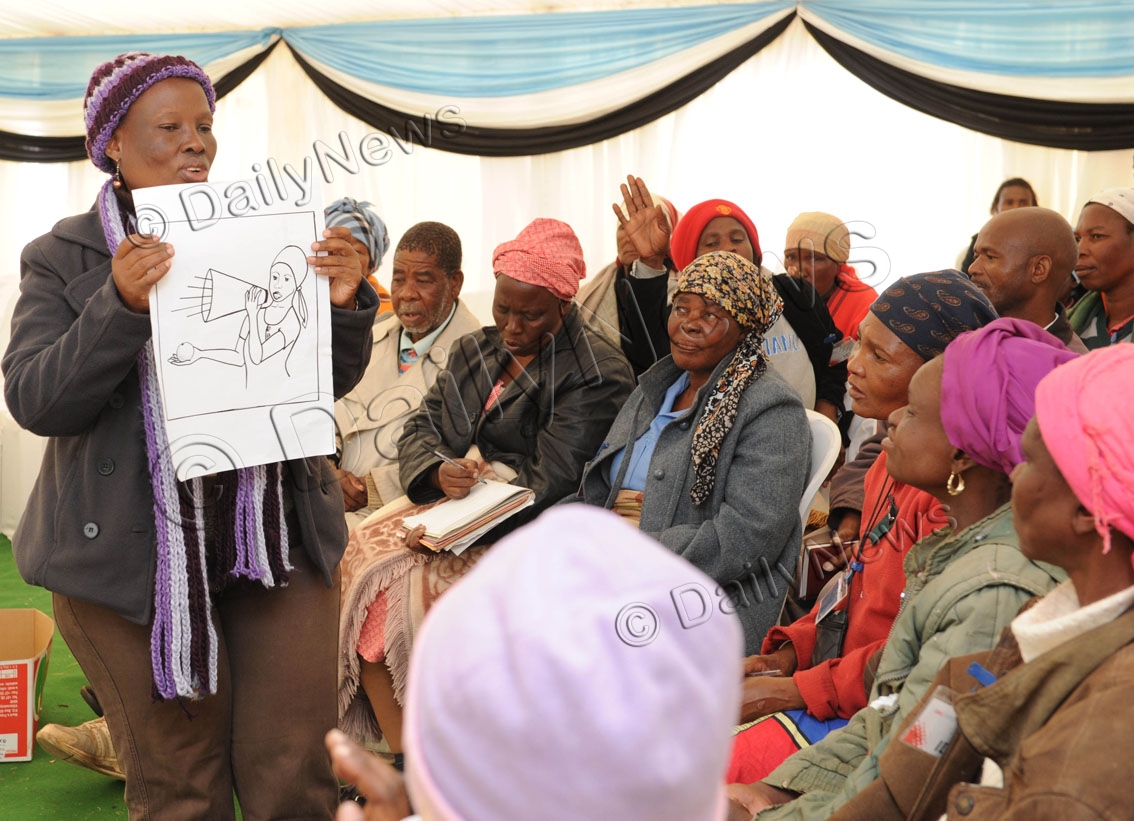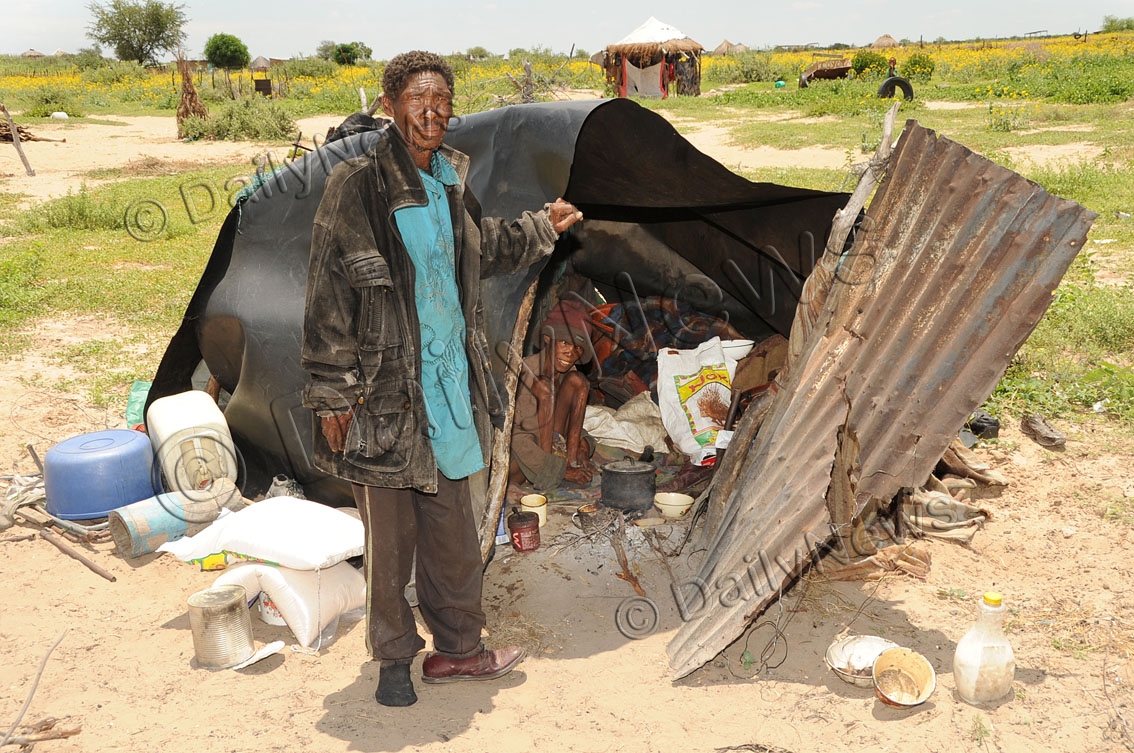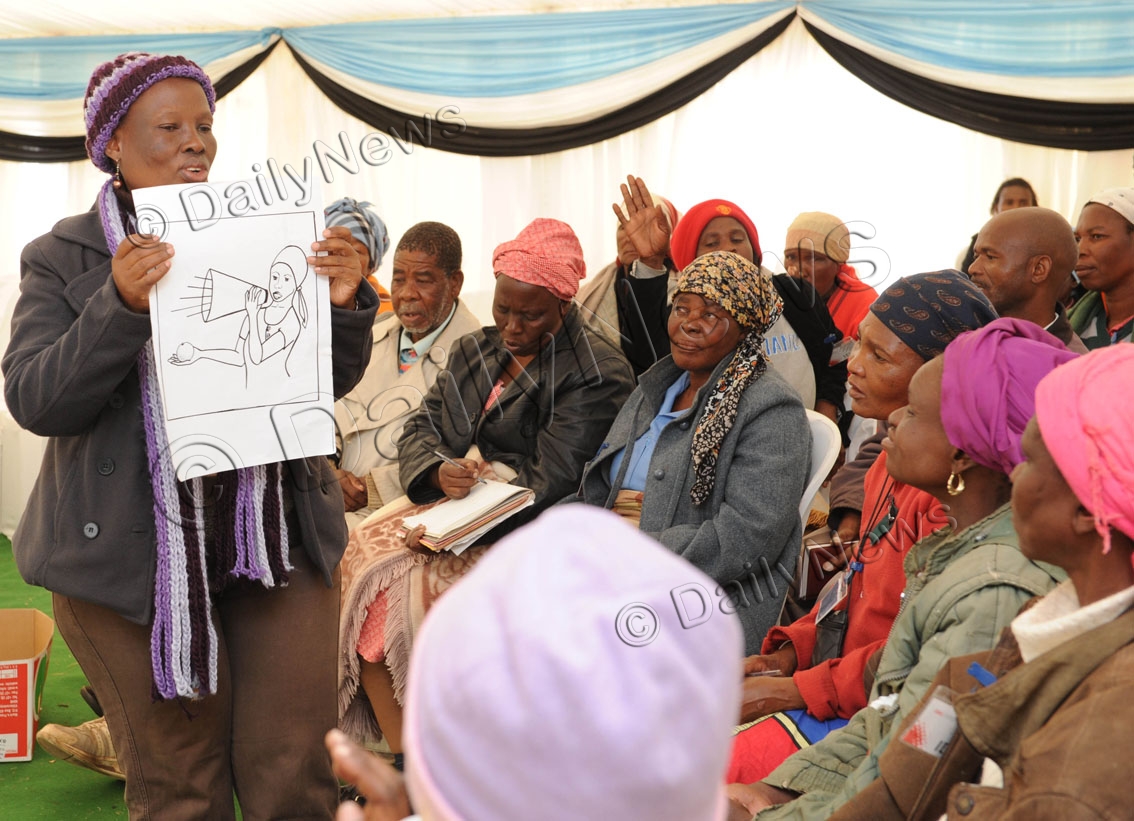Poverty eradication past present future
17 Nov 2015
From the infant days of Botswana as an autonomous republic, poverty eradication has always been a theme transcending national development plans, echoing in every budget proposal and rehashed in one way or another through policy. BOPA reporter, Rebaone Tswiio, highlights how this determination has bettered the semantics that label the policy documents.
In just four years into independence, the new government got the shock of a lifetime, a sad reality that some sections of the nation were not at par with the majority in as far as development was concerned. For a race to be fair, all athletes must have legs and differ only on how fast those legs can carry everything north of the waistline.
Unfortunately this was not the case upon independence, some athletes, it would appear, needed prosthetics to be able to start and finish the race for survival in the new Botswana.
Research had been done, evidence was abundant, scales were heavily tilted against Basarwa hence an immediate jump start was inevitable.
The attempt was a document titled Basarwa Development Initiative aimed at helping them adapt to the rapidly evolving economy of a post-independence republic.
That was actually to be a defining moment of political will during the 1970-1975 National Development Plan (NDP) where implementation of the first robust policies was to be rolled out.
Several unforeseen realities had necessitated a Basarwa specific policy in an effort to be more inclusive as a government on a learning curve of economic growth.
Having rolled out the Accelerated Rural Development Programme (ARDP), government had become alive to the fact that under-development was nonetheless rife among Basarwa.
Primarily that was because ARDP, research showed, excluded a sizeable proportion of the rural population.
The tea had also been chilli-peppered by the introduction of the Tribal Grazing Land Policy (TGLP) which had seriously displaced marginal sections of the rural areas, most of whom were Basarwa.
TGLP was fundamentally a livestock expansion exercise where a farmer with a sizeable herd was allowed to fence a vast ranch for better breeding and management.
Owing to historical reasons, TGLP ended up intruding into Basarwa communities more than any other government initiative hence the need for a special programme aimed at accelerating their living standards.
In strict terms, TGLP had literally robbed Peter to pay Paul, which left the debt outstanding, either way.
Crunch time came in 1978 where a slight shift in policy was effected which culminated in the dumping of Basarwa Development Programme in favour of a more broadened Remote Area Development Programme (RADP).
Government had reckoned in 1977 that there were many other ethnic groups who also needed economic support equal to that enjoyed by Basarwa, and therefore RADP expanded its scope to all remote area communities.
Semantics changed, yes! And so the scope was also broadened to impact a larger footprint.
RADP seemed to have sharper teeth than its predecessors as it also introduced the Economic Promotion Fund aimed at facilitating employment creation in identified areas.
So far the position of government in defining remote area communities has always been limited to settlements with between 250-499 people, having inadequate water and no or few land rights.
The RADP has been a pivotal component of government’s drive to provide basic social services such as schools and health facilities for remote area communities, who in government circles were until recently referred to in the vernacular as “batho ba teng nyana teng.”
The Setswana label has now been altered to “batho ba ba kgakala le ditlamelo,” in the words of Assistant Minister of Local Government and Rural Development.
The Assistant Minister, Botlogile Tshireletso, whose portfolio is wholesale poverty eradication, reasons that the previous Setswana tag had negative connotations that even burdened inhabitants of remote areas from trying to defeat challenges.
A closer look at the 2009 RADP blueprint indicates that government had in 1985 reviewed the programme and renamed it Accelerated Remote Area Development Programme (ARADP) in 1987.
Out of that document then emanated a special rural development programme in 1989.
The special programme limited itself only to seven districts being North West, Kweneng, Central, Ghanzi, Kgalagadi, Southern and Kgatleng.
The main objective then was to create permanent settlements, foster economic activity and provide public services with a view to improving living conditions of remote area dwellers.
It was during the implementation of National Development Plan 7 (NDP 7) that a reorientation of the RADP was proposed to incorporate political, social and economic empowerment.
The 1990 review had identified the main challenge as predominance of poverty, insecurity, inadequate education and negative public attitudes towards the programme and its beneficiaries.
A conclusion was also reached that the RADP was a very long term development programme, cumbersome and very complicated.
A lot still had to be done, according to the review, in spite of all that had been done under ARADP.
Policy surgery occurred in 2003 when RADP was reviewed with the aim of producing a comprehensive blueprint that will be implemented in line with the national Vision 2016 plus other national policies such as the settlement policy.
The review was also meant to suggest feasible ways of graduating both remote area dwellers and target population from assistance once they had reached a certain stage.
Owing to strategic implementation demands, government then decided that remote area issues shall be mainstreamed into the Revised Rural Development Policy, National Poverty Reduction Strategy of 2003 and the National Settlement Policy.
Hark back to 2013, government took things a step higher and introduced Affirmative Action Policy which was to be the blood, soul and teeth of all empowerment policies.
Through the policy, a student from Kaudwane for instance, was given special treatment over one from Molepolole for admission to university.
If the cut-off point for enrolment into a degree course at university stands at 36 points, a New Xade student can be admitted at 34 points while a Kanye student will not be afforded the same opportunity.
The aim, government announced, was to equate learning and living opportunities between settlement dwellers and mainstream society.
It is almost akin to the popular Black Economic Empowerment Policy of South Africa in that it spreads across several sectors within all state organs and covers such areas as tax windows, waivers for access to education, access to land and financial assistance.
The Affirmative Action policy is expected to breathe new life into remote areas over a 10-year period where a review will be undertaken upon expiry.
And so the expedition continues as government searches the length and breadth of the country to identify pockets of destitution, through a broader and non compromising approach titled Poverty Eradication. Ends
Source : BOPA
Author : Rebaone Tswiio
Location : Molepolole
Event : Interview
Date : 17 Nov 2015








